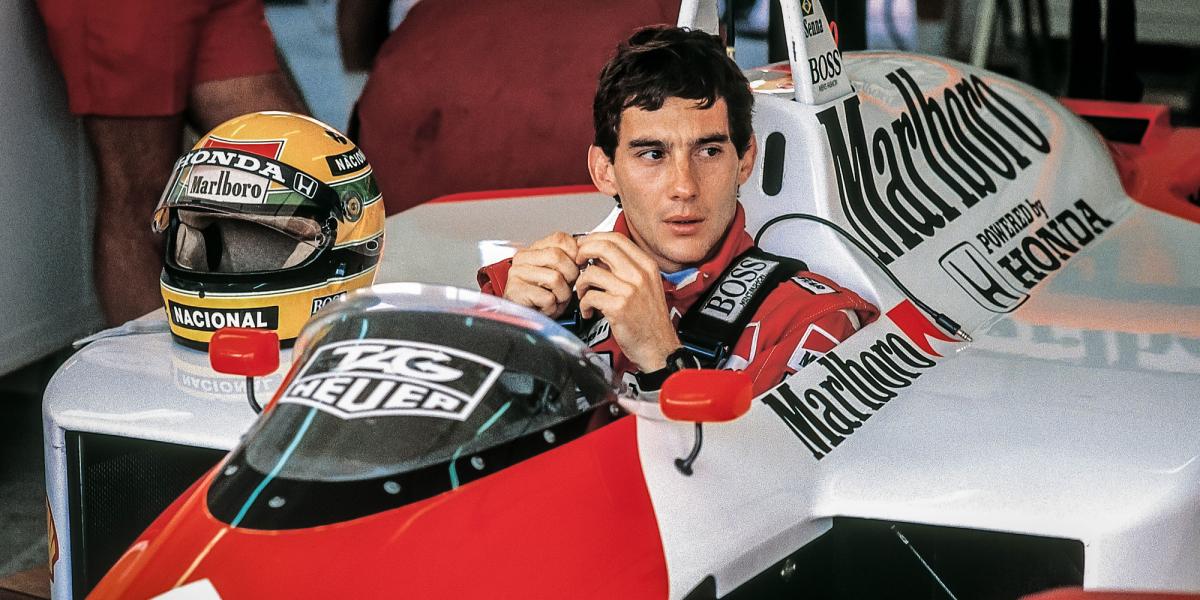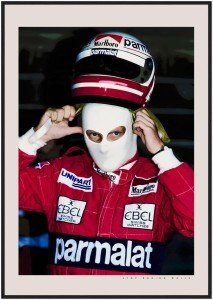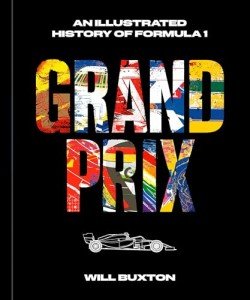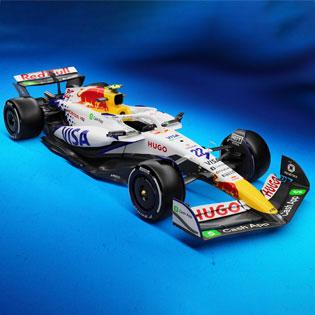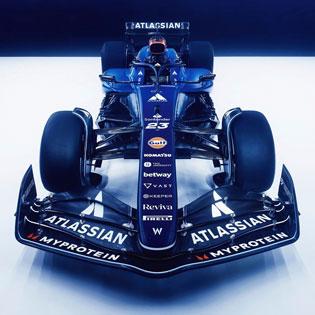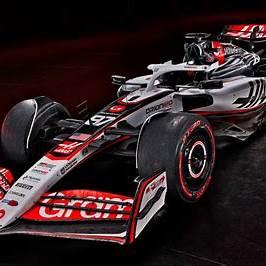Formula 1 is a tough judge of character. The stopwatch is unforgiving, the walls are close, and history remembers who kept their foot in when others lifted. The drivers below didn’t simply win races; they shaped the sport—technically, culturally, and emotionally. Their careers carry a common thread: an almost monastic dedication to mastering the craft, accepting risk, and returning for more.
Juan Manuel Fangio (F1 1950–1958): The Maestro Who Set the Standard
Before wind tunnels and petabytes of telemetry, Juan Manuel Fangio set the blueprint for excellence: mechanical sympathy, precision under pressure, and elegance at speed. Competing from 1950 to 1958, Fangio won five World Drivers’ Championships—in 1951, and then four straight from 1954 to 1957—an astonishing tally achieved with four different teams (Alfa Romeo, Mercedes, Ferrari, Maserati). That versatility is more than trivia; it underscores his pure driverly adaptability in an era when cars broke often and tracks were lethal. (Encyclopedia Britannica, Formula 1® - The Official F1® Website)
Fangio’s career is sometimes reduced to stats, but his dedication showed in the way he curated pace over distance, sparing machinery without surrendering speed. In just 51 championship Grands Prix, he started on the front row 48 times and converted 24 of his 35 podiums into victories—efficiency born of restraint and focus. He missed one season recovering from a serious injury, then came back to dominate—a quiet testament to resolve as much as talent. (Formula 1® - The Official F1® Website)
Jim Clark (F1 1960–1968): The Natural, Gone Too Soon
Jim Clark’s driving looked effortless, which is the highest compliment you can pay a racing driver. Active from 1960 to 1968, he took two F1 titles (1963, 1965) and—uniquely—won the 1965 Indianapolis 500, ushering rear-engined mastery into Indy lore. His 1965 Indy performance wasn’t just a win; it was a harbinger of a new era in American open-wheel racing. (Wikipedia, The Times)
Clark’s dedication expressed itself in clean lines and metronomic consistency. He won six of ten Grands Prix en route to his 1965 title; even his defeats tended to be mechanical rather than human. The tragedy was brutal and abrupt: he died in a Formula 2 race at Hockenheim on April 7, 1968. The shock reverberated because Clark wasn’t merely fast—he was considered the safest pair of hands out there. The paradox is at the heart of F1’s history. (Formula 1® - The Official F1® Website)
Sir Jackie Stewart (F1 1965–1973): The Champion Who Made Safety a Virtue
Jackie Stewart is a three-time champion (1969, 1971, 1973), but his legend runs beyond results. Racing from 1965 to 1973, Stewart took 27 wins, but his greatest contribution was a relentless push for safety at a time when such advocacy was seen as weakness. Better medical facilities, improved barriers, more stringent track standards—he fought for them all and paid the political cost to change attitudes. The sport’s survival owes as much to Stewart’s stubbornness as to any engineering innovation. (Formula 1® - The Official F1® Website, Wikipedia)
Stewart’s dedication was intellectual as well as physical. He believed the responsibility to come home safe could sit alongside the obligation to be fast. That belief changed Formula 1 for good.
Jochen Rindt (F1 1964–1970): Relentless Speed, a Title Awarded After Death
Jochen Rindt raced like the stopwatch had insulted him personally. His 1970 season with Lotus was searingly fast, anchored by the revolutionary Lotus 72. Rindt won five of the first nine races and had the title almost in hand when he died in practice at Monza on September 5, 1970. He remains F1’s only posthumous World Champion—both a tribute to his dominance and a haunting reminder of the era’s risks. (Wikipedia, halloffame.fia.com)
His Monaco win in an older Lotus 49 is the stuff of fables—charging down Jack Brabham in the closing laps and forcing the error that flipped the race. It was the essence of Rindt: ferocious, uncompromising, devoted to the move. (Formula 1® - The Official F1® Website)
Niki Lauda (F1 1971–1979, 1982–1985): Precision, Courage, and the Greatest Comeback
Niki Lauda epitomized the engineer-driver. He won three titles (1975, 1977 with Ferrari; 1984 with McLaren), each informed by forensic preparation and an allergy to superstition. Then came 1976 at the Nürburgring: a horrific fire that left him with life-altering injuries, last rites read in the hospital—and a return to the cockpit six weeks later at Monza. You can’t measure dedication more clearly than that. (Wikipedia)
Lauda narrowly lost the 1976 title by a single point to James Hunt, but the decision to withdraw from a rain-lashed Fuji finale was an act of rational bravery that reframed what it meant to be courageous in F1. His later life—founding airlines, guiding Mercedes as a non-executive chairman, helping recruit Lewis Hamilton—extended his legacy beyond the cockpit. Lauda died in 2019, mourned as much for his honesty and rigor as for his wins. (The Guardian)
Niki Lauda Vintage F1 Poster – Great Gift!
Bring the thrill of F1 racing to your walls with this iconic Niki Lauda poster, perfect for fans and collectors alike!
Product information
$42.99
Product Review Score
4.18 out of 5 stars
49 reviewsProduct links
Gilles Villeneuve (F1 1977–1982): The People’s Champion Whose Flame Burned Bright
Gilles Villeneuve’s statistics—six wins—don’t map to his myth. He drove for Ferrari from late 1977 until his death in qualifying at Zolder on May 8, 1982. He was adored because he seemed to wrestle the car into heroics—dragging a damaged Ferrari around Zandvoort on three wheels, fighting to the last ounce of adhesion, refusing the idea that a race was ever “settled.” (RaceFans)
Villeneuve’s death, a result of a high-speed collision during qualifying, sharpened debates about intra-team politics and risk after the fractious events of Imola 1982. The loss of such a beloved figure galvanized fans and teams alike; Ferrari still treats him as family. Dedication, for Villeneuve, meant deliverance to the spectacle—every lap an oath. (Wikipedia, Motorsport)
Sir Stirling Moss (F1 1951–1961): The Greatest to Never Wear the Crown
Sir Stirling Moss never won the World Championship, and that may have burnished his legend more than a single title could. Racing from 1951 to 1961 in F1, Moss tallied 16 GP wins and 212 career victories across disciplines, earning universal respect for speed, sportsmanship, and range. He famously defended Mike Hawthorn in a 1958 rules controversy that cost Moss the championship—a choice that revealed how he defined greatness. (Wikipedia)
Moss’s own words—better off never having won one—reveal a competitor who understood mythology as well as machinery. Long after retiring, he remained the paddock’s patron saint of “true racing.” A 2024 memorial service at Westminster Abbey captured the esteem he commanded across generations. (Formula 1® - The Official F1® Website, Reuters)
Alain Prost (F1 1980–1991, 1993): The Professor of Racecraft
Alain Prost didn’t attack races; he solved them. Four titles (1985, 1986, 1989, 1993) and 51 wins came from a repeatable method: tire care, clean passes, and championship math. His rivalry with Ayrton Senna—infamously peaking with collisions in 1989 and 1990 at Suzuka—made Sunday afternoons feel Shakespearean. But beyond the theatrics, Prost’s legacy is restraint as a weapon. (Formula 1® - The Official F1® Website, Wikipedia)
In his six McLaren seasons, Prost collected 30 wins and three titles; he later capped his career with a fourth championship at Williams in 1993. Calm, calculating, and deadly efficient, he proved dedication can be analytical, not only aggressive. (Formula 1® - The Official F1® Website)
Ayrton Senna (F1 1984–1994): The Edge of the Possible
Ayrton Senna didn’t just drive; he reached for some spiritual frontier at racing’s limit. Three titles (1988, 1990, 1991), 65 poles, and countless qualifying laps that felt like art. The 1988 McLaren season—15 wins in 16 races split between Senna and Prost—remains an emblem of domination. Their feud fused genius with jeopardy, culminating in collisions that still fuel arguments about intent and destiny. (Formula 1® - The Official F1® Website)
On May 1, 1994, leading at Imola, Senna suffered a fatal crash at Tamburello. The aftermath changed the sport: the Grand Prix Drivers’ Association was re-established, and safety reforms accelerated. Senna’s dedication had always seemed transcendent; in passing, it became a charge to protect the living. (Wikipedia)
McLaren MP4/4 Ayrton Senna 1988 F1 Model
Get your hands on this stunning replica that celebrates Ayrton Senna's legendary 1988 season with McLaren
Product information
$39.90
Product Review Score
4.87 out of 5 stars
103 reviewsProduct links
Michael Schumacher (F1 1991–2006, 2010–2012): Relentless, Ruthless, Revolutionary
Michael Schumacher rebuilt what dominance looks like. Seven titles—1994, 1995, then 2000–2004—were powered by obsessive preparation, fit-as-a-triathlete conditioning, and a symbiosis with Ferrari that turned a struggling team into a dynasty. He competed from 1991 to 2006, then returned from 2010 to 2012; the record book he left behind was once thought untouchable. (Wikipedia, Encyclopedia Britannica)
Schumacher’s dedication could cut—Monaco 2006 qualifying, Jerez 1997—moments that earned him critics even as his work ethic earned worship. After a skiing accident in 2013, his family has guarded his privacy. The paddock still speaks of him in present tense; that’s how his shadow falls. (The Guardian)
Mika Häkkinen (F1 1991–2001): The Calm Assassin Who Beat Ferrari
Mika Häkkinen’s legend concentrates into two searing seasons: back-to-back titles with McLaren in 1998 and 1999. The “Flying Finn” was cool where others raged, surgically quick where others muscled it. His peak duels with Schumacher were pure quality—aggressive but clean, relentlessly fast without drama. A sabbatical began in 2002 and became retirement, but his footprint is clear: at his best, he matched the very best. (Wikipedia, Formula 1® - The Official F1® Website)
Fernando Alonso (F1 2001–2018, 2021–present): Longevity as a Superpower
Fernando Alonso’s two titles (2005, 2006) included the career-defining act of dethroning Schumacher—a feat that demanded perfection over an entire season. But Alonso’s more radical achievement may be longevity. Debuting in 2001, returning in 2021, and still a force into the mid-2020s, he holds records for most starts while continuing to snatch podiums with sheer racecraft and restarts that make time slow down around him. (Wikipedia)
His story is also one of path choices—teams that weren’t quite ready, politics that blunted momentum. Yet the dedication is unmistakable: a complete driver hopelessly allergic to giving up, still sharpening his craft when contemporaries have long walked away. (The Guardian)
Sebastian Vettel (F1 2007–2022): The Streak That Made History
Sebastian Vettel’s four consecutive titles (2010–2013) with Red Bull locked him in with the sport’s great dynasties. The 2013 run—13 wins, including nine in a row—was statistical supremacy, yes, but also the product of relentless micro-improvements with Adrian Newey’s high-downforce masterpieces. After Ferrari near-misses and a final turn at Aston Martin, Vettel retired in 2022 with 53 wins and a reputation for fast laps and fair play. Dedication matured into mentorship and activism in his final years. (Wikipedia)
Lewis Hamilton (F1 2007–present): Records, Responsibility, and the Pursuit of More
Seven titles (2008, 2014, 2015, 2017–2020). Most wins, most poles, most podiums. The numbers are staggering, but the substance is richer: Hamilton redefined the modern champion’s role, using his platform for inclusion while maintaining a standard of qualifying pace and tire whispering that turned races on their heads. Moving to Ferrari for 2025 added another audacious chapter, and as of mid-2024 he had pushed the all-time wins mark past Schumacher’s—another statistical summit crested by a driver who treats ceilings as invitations. (Wikipedia, MoneyWeek)
Hamilton’s dedication is holistic—fitness, feedback, engineering empathy, and a mental game so strong he can lose the first stint and still own the last ten laps. Legends evolve; the bar keeps rising.
Max Verstappen (F1 2015–present): The Heir Apparent Who’s Already a Four-Time Champion
Max Verstappen arrived at 17 and instantly recalibrated what “ready” means. He has since built a four-title streak (2021–2024) with Red Bull, executing races with unflinching aggression backed by clinical tire and pace control. Even as the competitive picture shifts, his focus and adaptability remain the constants. In 2025, he’s balancing an expanding life with professional ambition—still an apex predator on Sunday, now with a broader sense of perspective. (Wikipedia, Talksport)
Dedication, in Verstappen’s case, looks like modern minimalism: reduce noise, maximize execution, repeat. The stats will likely keep climbing; the mentality is already elite.
The Highlights and the Heartbreaks: How Dedication Shapes Destiny
If you stitch these careers together, themes recur.
Adaptability as a championship tool. Fangio won titles with four different teams; Alonso keeps finding front rows across eras; Hamilton switched from a title-winning McLaren to a rebuilding Mercedes and then again to Ferrari—each move a bet on process over comfort. The dedication here is intellectual humility: learn the new car, new team, new culture—and win anyway. (Encyclopedia Britannica, Wikipedia)
The courage to return. Lauda’s comeback six weeks after the Nürburgring would be unbelievable if it weren’t documented. Häkkinen returned from a terrifying 1995 Adelaide accident to become a two-time champion. Drivers don’t simply heal; they negotiate with fear until it yields. (Wikipedia, Formula 1® - The Official F1® Website)
The rivalries that harden steel. Prost–Senna, Schumacher–Häkkinen, Hamilton–Vettel, Verstappen against the field; iron sharpens iron, and dedication is often clearest when the opponent is historic. These feuds built careers because the protagonists embraced the weight of expectation and still delivered. (Formula 1® - The Official F1® Website, Wikipedia)
The tragedies that forced F1 to grow up. Clark at Hockenheim, Rindt at Monza, Villeneuve at Zolder, Senna at Imola—each loss demanded changes to cars, circuits, or culture. Stewart’s advocacy made safety a professional obligation; the GPDA relaunch after Senna formalized it. The dedication that once meant “ignore risk” evolved into “manage risk,” and that evolution saved lives. (Formula 1® - The Official F1® Website, Wikipedia)
The statistics—and what they miss. Moss without a crown. Villeneuve with only six wins. Verstappen with four titles before 28. Numbers are a map, not the territory. The terrain is the way these drivers trained, tested, and turned feedback into lap time; the way they approached their own limits without flinching. (Wikipedia, RaceFans)
Grand Prix: Illustrated History of Formula 1
Dive into the thrilling world of Formula 1 with stunning visuals and captivating stories from every Grand Prix
Product information
$29.99 $10.00
Product Review Score
4.99 out of 5 stars
174 reviewsProduct links
Career Snapshots (Years, Highlights, Tragedies)
This sport lives in details, so here are concise career arcs for quick context:
Juan Manuel Fangio (1950–1958)
Five titles (1951, 1954–1957). Won with Alfa Romeo, Mercedes, Ferrari, Maserati—an adaptability feat that still defines GOAT debates. Near-fatal injury interruption, then supreme dominance. (Encyclopedia Britannica, Formula 1® - The Official F1® Website)
Jim Clark (1960–1968)
Two titles (1963, 1965). First non-American Indy 500 winner in 49 years (1965). Died in 1968 F2 crash at Hockenheim. The purest blend of speed and serenity the sport had seen. (Wikipedia, The Times)
Jackie Stewart (1965–1973)
Three titles (1969, 1971, 1973). Led safety revolution; his influence pervades every modern race weekend. (Formula 1® - The Official F1® Website, Wikipedia)
Jochen Rindt (1964–1970)
1970 World Champion posthumously after fatal Monza accident. His Monaco 1970 charge remains the film reel that explains his aura. (Wikipedia, Formula 1® - The Official F1® Website)
Niki Lauda (1971–1979, 1982–1985)
Three titles (1975, 1977, 1984). Survived the 1976 Nürburgring inferno; back in six weeks; later helped shape Mercedes’ dynasty. Passed away in 2019, mourned as F1’s conscience and competitor. (Wikipedia, The Guardian)
Gilles Villeneuve (1977–1982)
Six wins, infinite memories. Died in qualifying at Zolder in 1982; beloved for bravery and heart-first driving. (Wikipedia)
Stirling Moss (1951–1961)
Sixteen GP wins, zero titles—the patron saint of pure racers. Revered for his ethics as much as his speed. (Wikipedia, Reuters)
Alain Prost (1980–1991, 1993)
Four titles, the professor’s method—smooth, strategic, devastatingly effective. The perfect foil to Senna’s fire. (Formula 1® - The Official F1® Website, Wikipedia)
Ayrton Senna (1984–1994)
Three titles, qualifying sorcery, and the 1988 super-season with McLaren. Died leading at Imola; his loss accelerated safety reforms and cemented a transcendental legacy. (Formula 1® - The Official F1® Website, Wikipedia)
Michael Schumacher (1991–2006, 2010–2012)
Seven titles. Ferrari transformed under his discipline. Post-racing injury in 2013; family privacy fiercely maintained. A monument to preparation as art. (Wikipedia, Encyclopedia Britannica)
Mika Häkkinen (1991–2001)
Back-to-back titles (1998–1999). The clean counterpunch to Schumacher’s red tide. Retired with his cool intact. (Wikipedia, Formula 1® - The Official F1® Website)
Fernando Alonso (2001–2018, 2021–present)
Two titles (2005–2006). Out-dueled Schumacher, then out-lasted an entire generation. Longevity as a weapon. (Wikipedia)
Sebastian Vettel (2007–2022)
Four straight titles (2010–2013). The 2013 streak stands as an efficiency masterclass; retired as a paddock statesman. (Wikipedia)
Lewis Hamilton (2007–present)
Seven titles. Statistical summit plus social leadership. A bold move to Ferrari in 2025 keeps the story fresh. (Wikipedia, MoneyWeek)
Max Verstappen (2015–present)
Four titles on the bounce (2021–2024). A modern execution machine now adding perspective to power. (Wikipedia, Talksport)
Why These Drivers Still Matter
Fans don’t fall in love with spreadsheets; they fall in love with moments. Fangio’s mastery with failing brakes. Clark’s fluidity in the rain. Stewart taking on an unsafe status quo. Rindt attacking Monaco’s walls and beating time itself. Lauda stepping back into the cockpit with burnt lungs because the work wasn’t finished. Villeneuve limping a wounded Ferrari back to the pits because surrender wasn’t in his vocabulary. Prost plotting victories with cold clarity. Senna hunting a qualifying lap like it owed him money. Schumacher restructuring a team’s DNA. Häkkinen sweeping Suzuka with scalpel lines. Alonso mugging the field on restarts. Vettel building streaks with almost boring relentlessness. Hamilton redefining what “complete” means. Verstappen turning inevitability into entertainment.
Dedication is the through-line. It’s the early-morning simulator session and the late-night debrief, the willingness to take responsibility when others point at luck, the hard decision to box early or stay out one lap more, the choice to fight for safer circuits when the crowd wants blood. Legends don’t just win—they change the terms of the argument.
Conclusion: The Cost of Glory—and Why They Paid It
From Fangio’s 1950s to Verstappen’s 2020s, the best drivers united technical feel with an appetite for risk, then bent both to their will. Their careers feature dizzying highs—long title streaks, epochal duels—and the darkest days imaginable. Yet they kept returning to the car. Dedication, in Formula 1, is the silent contract: you give everything—time, comfort, sometimes safety itself—in exchange for the possibility of perfection over a single flying lap or a race measured in tenths.
That’s why these names keep echoing. They didn’t just inhabit the sport; they enlarged it—forcing teams to raise their standards, pushing organizers to make it safer, and daring the next generation to find the limit, tame it, and then go one inch further.
